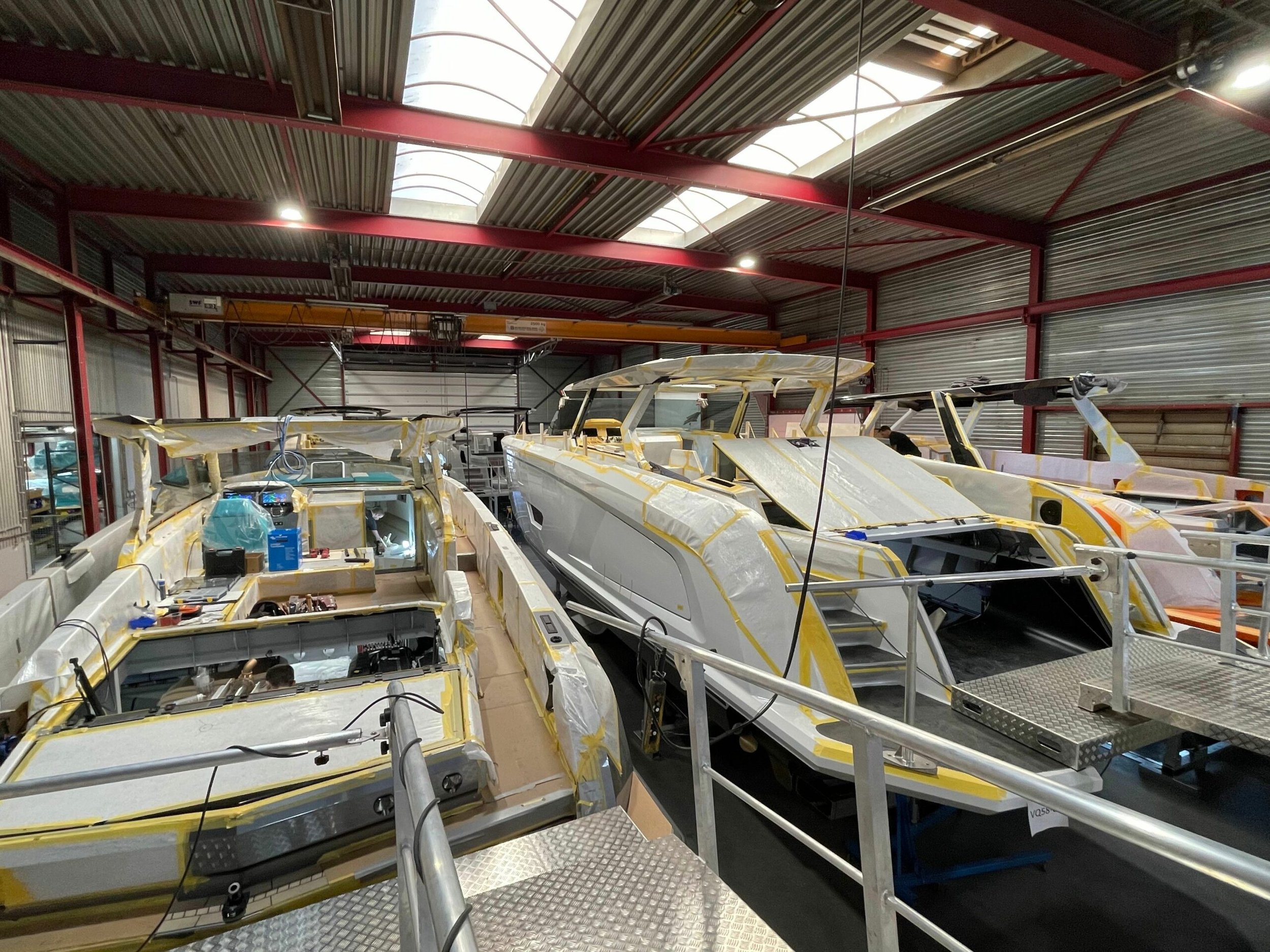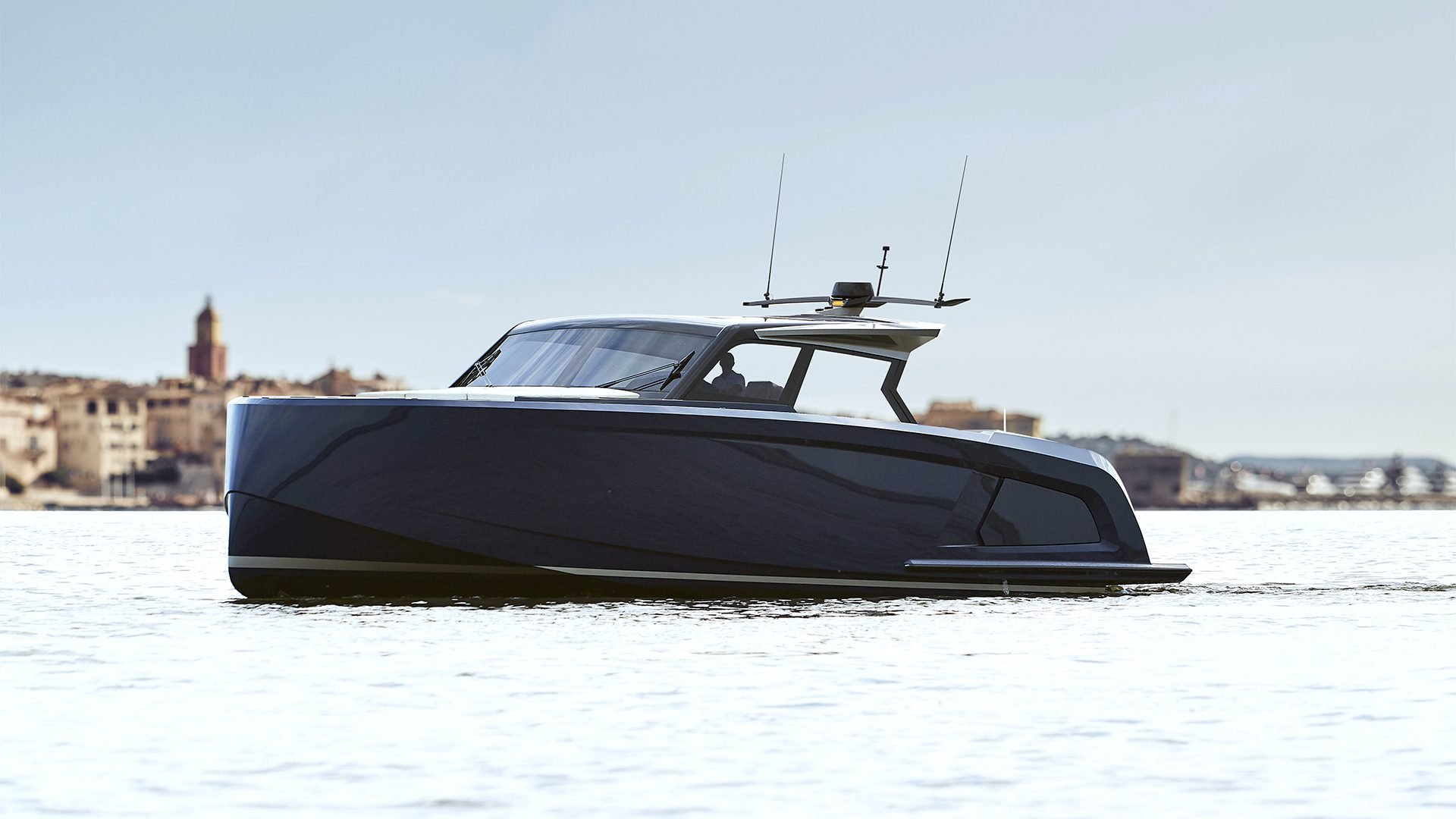Fiberglass vs. Aluminum
Fiberglass vs. aluminum. The end product looks the same but they are vastly different.
Writer’s Note: I’m not here to tell you which is better. That’s for you to decide. This review intends to educate you on the differences at an intermediate level. You’ll leave with enough detail to make a smart purchase decision without going into concepts irrelevant to most consumers. If you have more complex questions, shoot me an email: Reed@RNMarine.com.
Client Question
“I’ve landed on either Vanquish or VanDutch. Is hull material a big deal? There are 100’s of blogs trying to convince me whether fiberglass or aluminum is better, but is it worth swinging my decision? Help.”
No better way to address the fiberglass vs. aluminum debate than a real world example. To help visualize the comparison, we’re calling on a question I got during the Miami Boat Show: VanDutch vs. Vanquish, and is hull material a big enough deal to sway the purchase. Let’s get into it.
Both brands have grown to lead their category while utilizing opposite hull materials: Fiberglass via VanDutch and Aluminum via Vanquish*. Both have success with their respective materials, but is one better than the other? That depends…
*While VanDutch remains exclusively a fiberglass builder, Vanquish now makes the VQ40 and VQ55 in fiberglass.
VANQUISH
Vanquish is a Dutch-based builder of luxury day boats. They primarily use aluminum in hull construction.
VanDutch
VanDutch is an Italian-based builder of luxury day boats. They exclusively use fiberglass in hull construction.
Opening Statement
Relative to the history of yachting, the dayboat space is brand new. VanDutch incorporated in 2009 and Vanquish in 2012, and while the names, nationalities and product category are similar, build strategies are on opposite sides of the aisle.
VanDutch (and many of its competitors) depend on fiberglass as a hull material. Fiberglass is durable, consistent and offers a smooth, stable ride. Alternatively, Vanquish threw the curveball the market needed when it went mainstream with aluminum. While generally more expensive, aluminum offers speed and customization fiberglass cannot. It also requires less power to push itself along.
The battleground is set.
The case for Aluminum
Less weight, which improves overall top speed and fuel efficiency
Requires less power to achieve comparable performance, cheaper power systems
Improved ability to customize
Easier to fix if damaged
The case hinges on one unalienable truth: Aluminum is lighter and more forgiving than fiberglass. With that comes pros and cons, but for those seeking speed and customization, aluminum can’t be beat.
Since fiberglass needs to be laid via a mold, your outcome is restricted to the design of said mold. Can you make changes to the mold? Sure, but its extremely costly, and therefore, impractical. When builders choose to build via a mold, they are signing up for production of that same product for the long term.
On the other hand, the orders of an aluminum production line can flow with market demand. One order can be 54 feet and the next 56 feet. One order can have a roof, while the next can be open. This is no perfect process, coming with the cost of engineering unique units, yet the agility may be the value prop a demanding buyer needs.
Beyond manufacturing versatility, aluminum significantly reduces total weight, improving top speed and fuel efficiency. Anyone prioritizing speed would likely choose aluminum over fiberglass if given the choice. Lighter weight also requires less of its engine power to push the boat through the water. Now we can buy smaller engines, and you can save money.
Lastly, the market will tell you aluminum is easier to fix. In my opinion fixing damage is annoying either way, but its worth the mention.
The case for Fiberglass
Heavier material weight, which improves stability, seaworthiness and handling in chop
Reduced affects from crosswinds
Stronger material, durability
Smooth, seamless finish caused by production from a mold
Faster build time
There’s a reason fiberglass (otherwise known as “composite” or “GRP”) is so wildly used. Fiberglass is dependable, easy to use in large scale production and non-conductive in water compared to aluminum. What’s the main positive though? A smooth, stable ride compared to its alternatives.
If you prefer casual cruising over setting the speed record, you’d likely choose fiberglass over aluminum if given the choice. One unsung benefit? The heavy weight helps counter effects from crosswinds when at slow speeds. This comes in handy when maneuvering in tight spaces or docking in front of the restaurant crowd.
Building from a mold also yields a single piece of strong material verses the welded panels from an aluminum project. Those panels and their weld locations may not share the same uniform look over time. Fiberglass is known to last longer and be less affected by the elements.
The Verdict
Visually, there is usually no difference. Fiberglass and aluminum finish to the same beauty. The decision comes with your boating style and how the material may affect you on the water or in long term maintenance.
Are you a speed demon? Do you get seasick? Do you enjoy a one-of-a-kind toy? Are you in highly conductive waters?
Its SO important to consider how you’ll use the boat, where you’ll use the boat and how frequently you’ll use the boat before making a purchase decision. A good broker will define your owner profile and guide you to make a decision. For most user profiles, the battle between fiberglass and aluminum is irrelevant. For others, its a worthy consideration.







